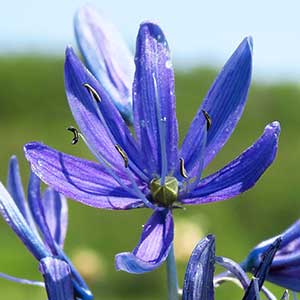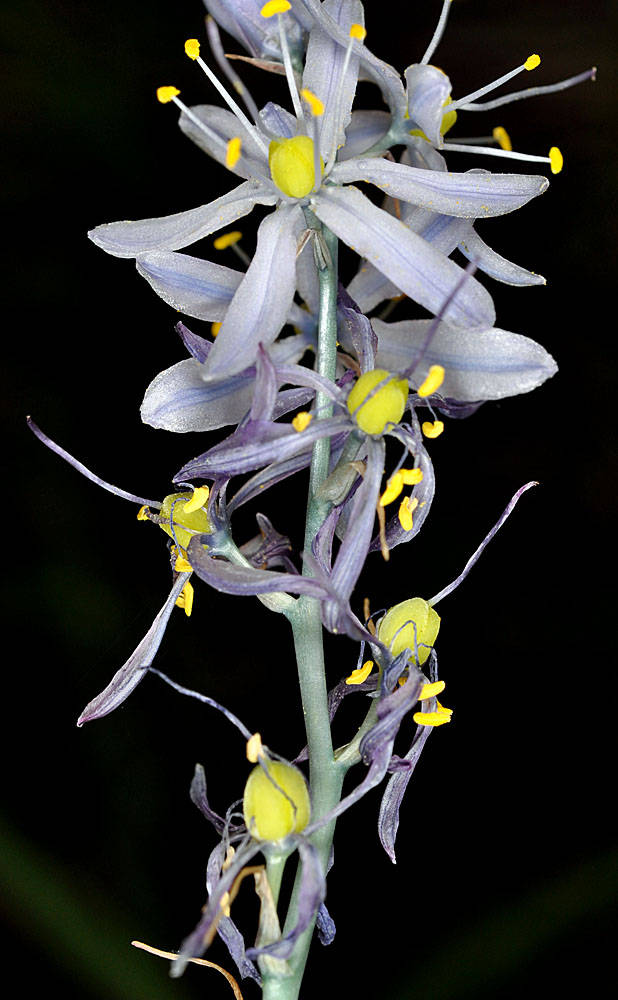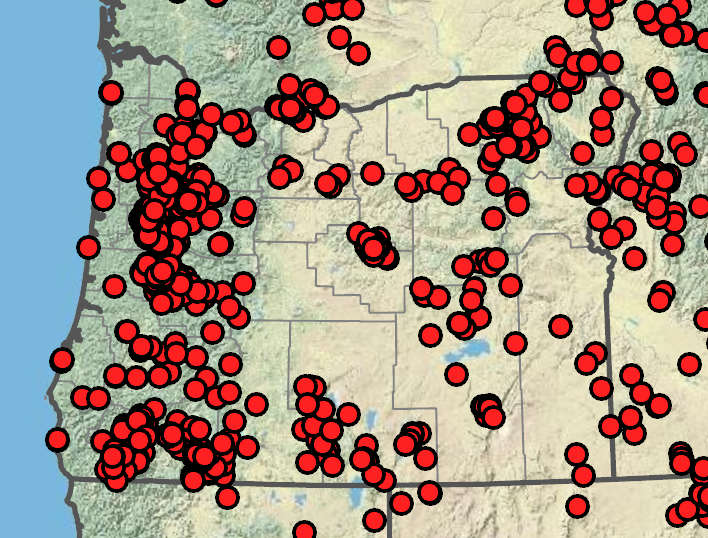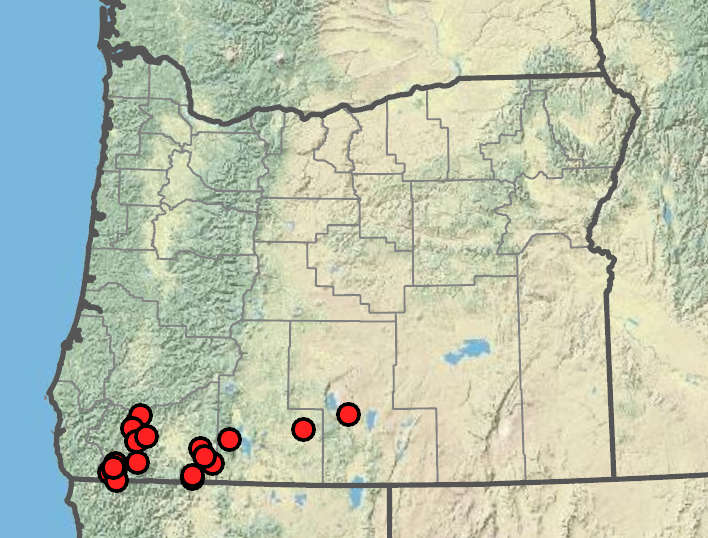Camassia quamash
Camassia quamash ssp. walpolei
common camas
Walpole's camas
3–5, lanceolate to linear, 25–70 cm × 5–15 mm.
12–35 cm × 4–13 mm, not glaucous but uniformly green on both sides.
nodes 3–45, with 2–5 or more flowers open at once, sterile bracts 0–2; most longer than pedicels, tan to blue;
pedicel-stem angle broad or less often narrow.
sterile bracts 0–2.
corollas bilateral, rarely radial;
tepals 10–35 × 3–5 mm, pale blue to deep blue-violet, initially withering individually or connivently but separating in fruit and persisting on stem;
veins 3–9.
corollas radial to bilateral;
tepals pale blue or blue-violet, 8–20 × 2–5 mm, withering separately and persistent on stem;
veins 3(5);
anthers mostly bright yellow.
oriented away from or appressed to stem; ovoid-oblong, 15–25 mm.
erect on incurved pedicels and positioned close to stem, 8–15 mm.
5–10 per locule.
3–6 per locule.
Camassia quamash
Camassia quamash ssp. walpolei
Western North America. 8 subspecies; 6 subspecies treated in Flora.
Camassia quamash includes a confusing array of morphologically and geographically diverse subspecies. Differentiating them remains challenging, yet genetic data have revealed a detectable molecular signature between groups that grow “east” (breviflora, quamash, utahensis) and “west” of the Cascades (intermedia, maxima, walpolei). Taxa within these groups are still unresolved (Fishbein et al. 2010).
Wet grassy meadows in Ponderosa pine forests, roadside ditches. Flowering Apr–Jun. 50–1400 m. BR, Casc, ECas, Sisk. Native.
The tiny, often radial flowers, combined with tepal venation and fruits held close to the stem typically separate C. q. ssp. walpolei from other species and subspecies. Although distinctive in southwestern Oregon and often described as the only radially symmetric subspecies of C. quamash, some populations of Walpole’s camas have plants that vary considerably in this trait.
Susan Kephart
Susan Kephart





